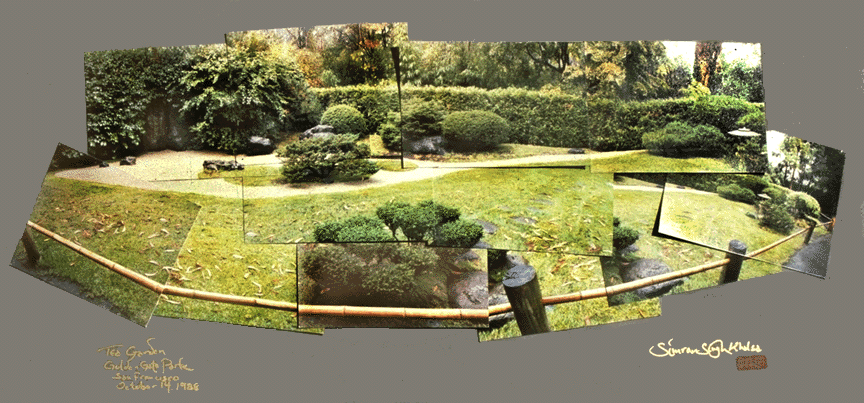Landscape. And the relation of landscape to consiousness.
The many layers. Geologic structure and the swift
week-long opening of the buckeye bud
into six five-fingered hands.
Representation. Putting landscape on the wall.
Countless layers squeezed onto a thin space.
Shape, color, the image: in your face.
Behind glass. A window? Or a door?
The experience of landscape is multidimensional. In space, in space-time, in mind time. Creating landscape imagery entails a mapping: folding three dimensions onto two. Flat. There is no way to make an image entirely faithful to what the eye, the human brain, sees. Something is always lost. As artists we choose what to lose, what to gain.
I came to photography from Chinese painting. When I began I decided I would use Chinese painting perspectives in my photographs. I found that the single shot of the camera could not capture the feeling of space, the feeling of being there, that traditional Chinese landscape painters have been able to achieve. The camera strictly enforces a linear perspective with a single static viewpoint and all parallel lines converging to vanishing points off in the distance. The image formed is convincing, though artificial in subtle ways, and only works when confined to small picture areas. When we want to handle very wide angles, the picture tends to fall away at the edges, as if painted on the outside of a sphere. Alberti, who invented the projection method of linear perspective in the fifteenth century, essentially placed a veil (Leonardo Da Vinci used a pane of glass) between the viewer and the subject. We have been separated from the environment ever since.
Though the eye is often compared to camera, there are fundamental differences which free us from having to experience the world through Alberti's veil or Leonardo's window: Our retina is (roughly) hemispherical, and our visual system is movement-based. The eyes constantly move over the field of view in little jerky motions called "saccades." After each movement the eyes stop just long enough to register a single image. The brain builds up the experience of the environment from many of these little "pictures."
In my work I use photographic collage to mimic these aspects of our visual system in trying to break out of linear perspective and achieve a feeling of being surrounded, of the environment wrapping around the viewer. By taking many snapshots and pasting them together, a collage allows the viewer to gradually build a mental image from the many small pieces. By pointing the camera in different directions and changing the sizes of the individual pictures (in camera, with a zoom lens), I am trying to work with perspectives that no longer separate the viewer from the scene. Alberti's veil is rent; Leonardo's window becomes a door. The viewer is introduced back into the environment.
Simran Gleason
simran@art.net
